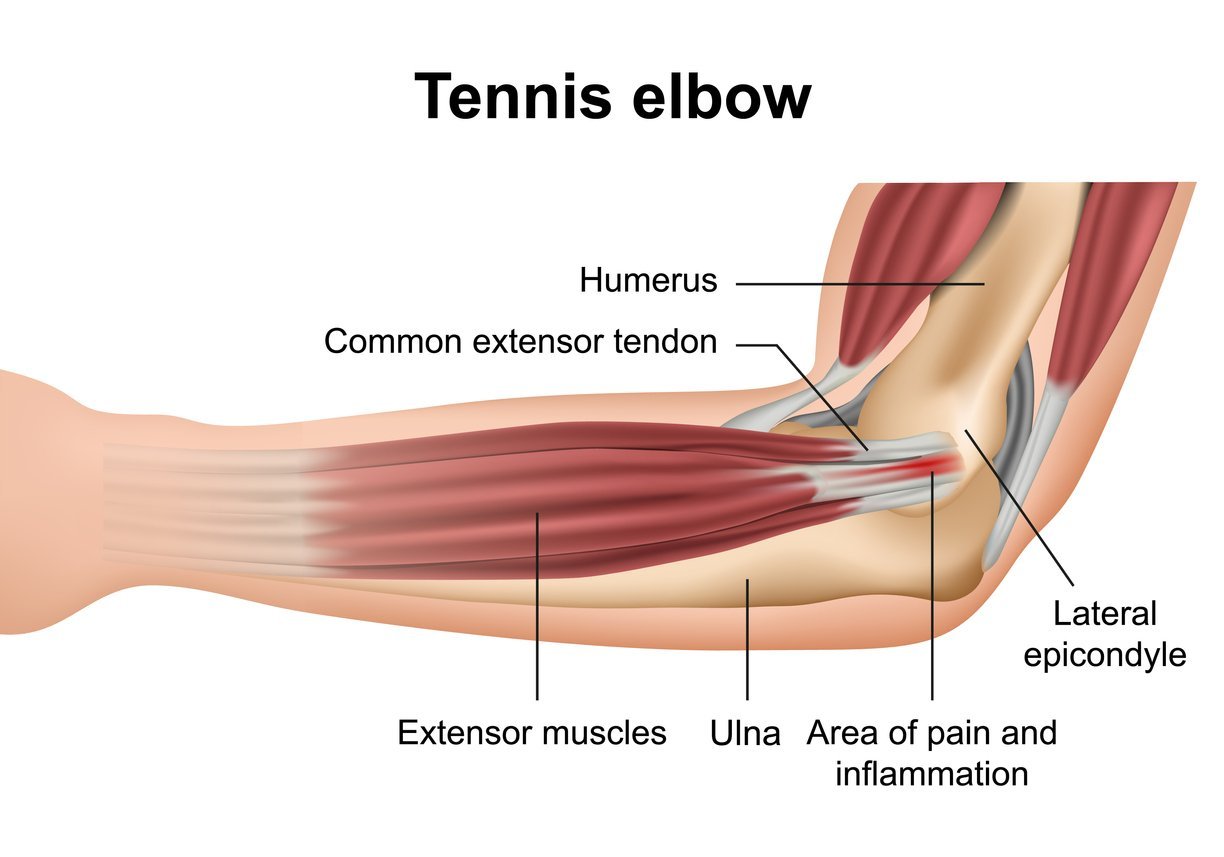Tennis elbow is a condition typically caused by the repetitive overuse of forearm muscles. Despite its name, tennis elbow affects not only athletes involved in racquet sports but also individuals who frequently use their hands, such as painters and gardeners.
The pain associated with tennis elbow can become severe, making it difficult to perform daily activities. When this occurs, physical therapy is often required for treatment.
What role can physical therapy play in the treatment of tennis elbow?
Upon a confirmed diagnosis, your physician may suggest various surgical and non-surgical treatment options. For treating tennis elbow, physical therapy is often recommended as a non-surgical approach due to its proven effectiveness in accelerating the healing process and enhancing muscle function.

Physical therapy involves specific exercises designed to strengthen your forearm muscles and improve your resistance to repetitive movements. These exercises include the wrist extensor flex, stress ball squeeze, and finger stretch. While there are many effective exercises, we will discuss strengthening exercises in detail to help you understand how to perform them correctly.
The goal of physical therapy is to reduce pain and strengthen your forearm muscles. A physical therapist will teach you how to perform common exercises in a way that prevents future injuries. Physical therapy improves blood flow to muscles and tendons, which is crucial because injured tendons often don’t receive adequate blood and oxygen. These exercises enhance the healing process by increasing blood flow and oxygen supply.
If you are feeling down due to the pain and limitations caused by tennis elbow, physical therapy can boost your serotonin levels, brightening your mood and improving your mental health overall.
Tennis elbow is a painful condition resulting from overuse of the extensor muscles in the arm and forearm, particularly where the tendons attach to the rounded bone projections on the outer aspect of the elbow. These muscles are engaged in activities like gripping, twisting, and carrying objects. Prolonged use of the wrist and hand, such as when working on a computer, operating machinery, or playing tennis with improper technique or grip, can lead to this condition, commonly known as tennis elbow.
What are the signs and symptoms of tennis elbow?
Tennis elbow can suddenly occur after excessive use of the wrist and hand in activities requiring force, such as twisting, lifting, or pulling. More commonly, symptoms develop gradually over weeks and months due to repeated, forceful use of the wrist, hand, and elbow. For instance, cashiers might develop symptoms from repetitive, forceful typing combined with continuously lifting grocery bags.
Symptoms may include pain radiating into the forearm and wrist, difficulty performing common tasks like holding a coffee cup or turning a doorknob, problems with gripping activities, and increased pain when using the wrist or hand for lifting objects, opening jars, or tightly gripping utensils. Additionally, it can cause stiffness in the elbow and weakness in the wrist, hand, and forearm.
How is tennis elbow diagnosed?
Tennis elbow typically arises from repeated movements, affecting the muscles and joints in the affected area. Your physical therapist may examine not only your elbow but also other areas of your body that could be contributing to the pain. The therapist will perform specialized manual tests to diagnose the issue and identify conditions such as muscle weakness that may have led to the problem. For instance, they might ask you to gently tense or stretch the sore muscles to pinpoint the exact location of the issue. In rare cases, an X-ray may be needed for diagnosis.
Can you prevent tennis elbow?
Fortunately, tennis elbow is a preventable condition. You can reduce your risk by using proper techniques in your job and sports, staying fit, and using equipment suited to your body type and activity level. A physical therapist can provide tips and strategies to help you prevent this condition.
If you’ve had tennis elbow in the past, you might be at risk of recurrence, especially if you didn’t allow sufficient time for healing or for your muscles to strengthen and your joint mobility to fully restore. Returning to sports and activities too soon can lead to persistent pain or frequent re-injuries.
Consult a physical therapist in Delhi to determine if your elbow, forearm, and wrist have fully healed and are ready for activity. Remember, the absence of pain doesn’t necessarily mean the injury has healed, and it may take additional days or weeks for complete recovery.

